Abstract
The large number of modern methods which have been published for the determination of total bile pigments in the blood plasma indicates the difficulties of the estimation and suggests the need for a reliable standard method. In view of the present importance of plasma bilirubin levels in the diagnosis and treatment of jaundiced subjects, six analytical procedures have been studied, each chosen as far as possible, as a representative of a group of methods each embodying different principles.
A spectrophotometric method (White, Haidar, and Reinhold, 1958) and five diazo coupling procedures (Jendrassik and Gróf, 1938; Powell, 1944; Perryman, Richards, and Holbrook, 1957; Stoner and Weisberg, 1957; Lathe and Ruthven, 1958) were investigated, and the results obtained by carrying out duplicate analyses by different methods on 54 stored and 64 fresh plasmas or sera are presented and discussed in this paper.
An amount of haem pigment which can be detected visually in plasma is sufficient to cause a considerable underestimation of bilirubin by the method of Powell (1944) and overestimation by the method of Stoner and Weisberg (1957). Inferences drawn from serial estimations by these methods can therefore be misleading, and this is especially pertinent when results obtained from infant blood containing variable amounts of haem pigments are being assessed. Methods based on the original van den Bergh procedure with various preliminary steps of protein precipitation in alcoholic solutions at about pH4 give low and poorly reproducible results; losses due to the coprecipitation of bilirubin esters with protein have been confirmed. In our opinion such methods should be abandoned.
Determination of total bilirubin by colour (White et al., 1958) is reliable only for plasma known to contain no lipochrome or `directly-reacting' pigment; total bile pigment may be overestimated by this technique in plasma containing conjugated bilirubin.
We consider that the method of Lathe and Ruthven (1958) is to be preferred for use on a routine basis. It is conveniently simple, and under all conditions normally encountered gives results sufficiently accurate and reproducible for clinical use. When this or any other procedure is used, a primary standardization between different laboratories with sera containing known amounts of added bilirubin is essential if comparable results are to be obtained.
Full text
PDF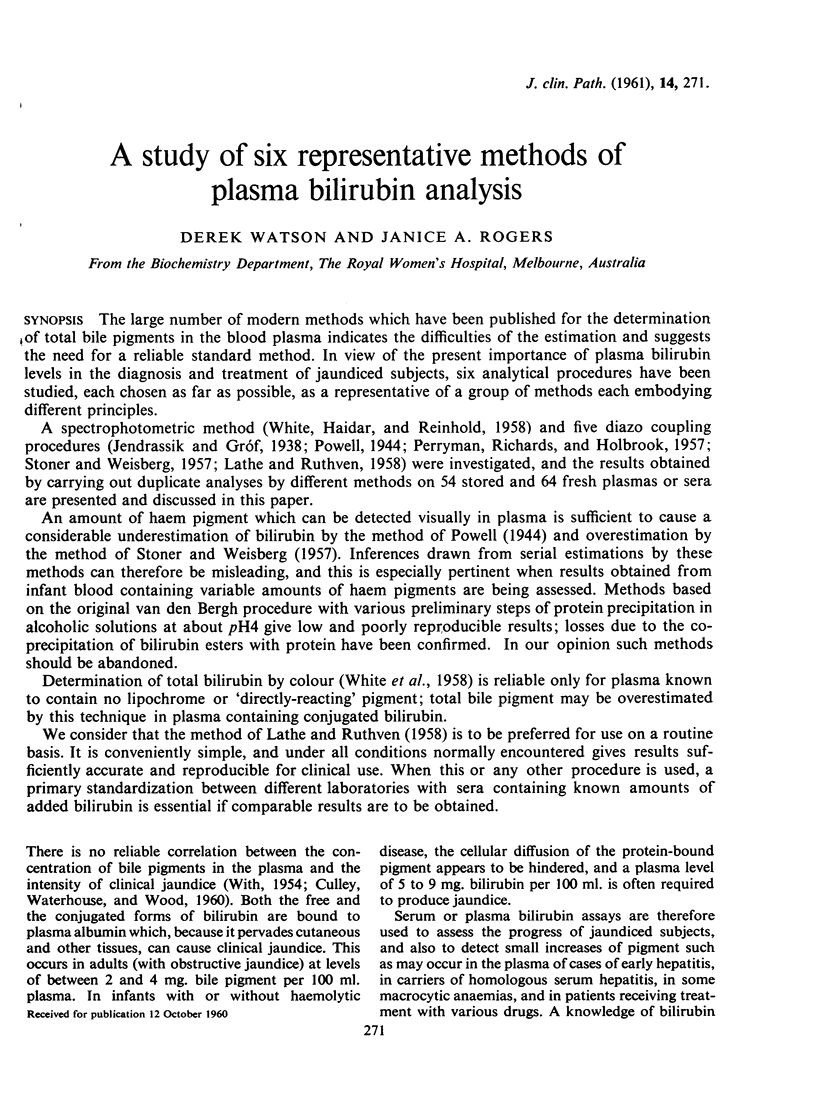
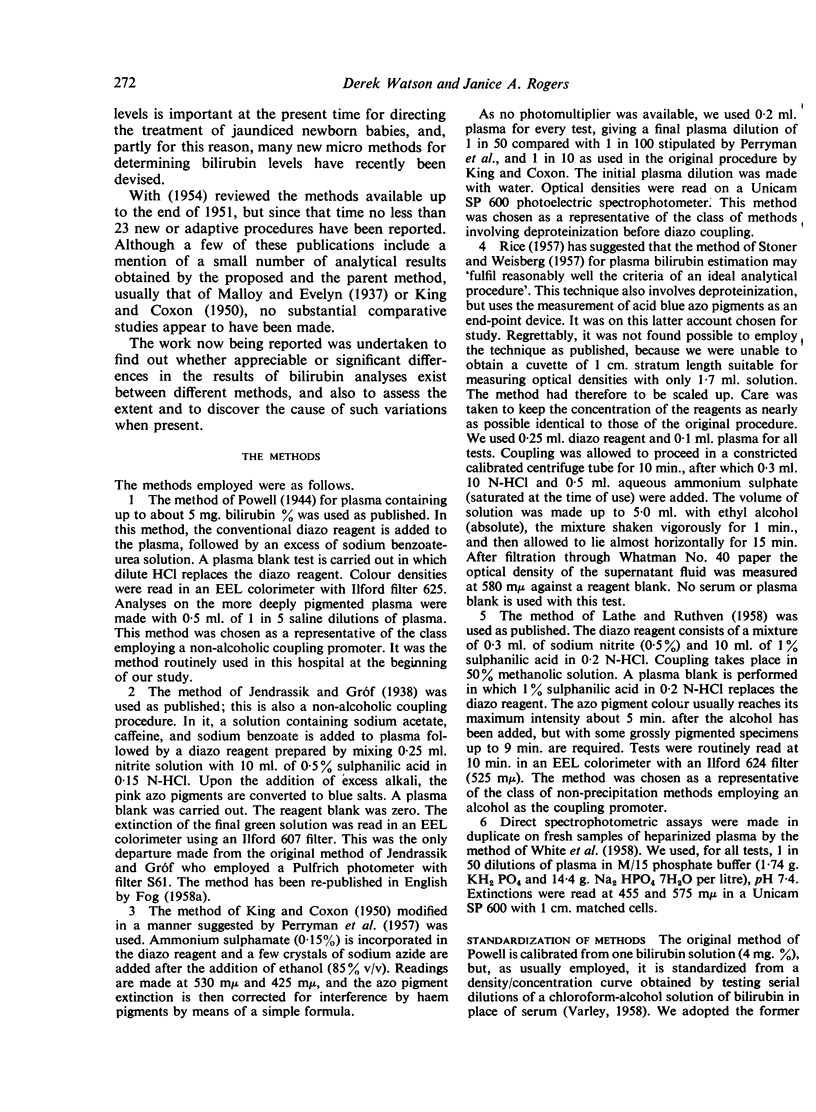
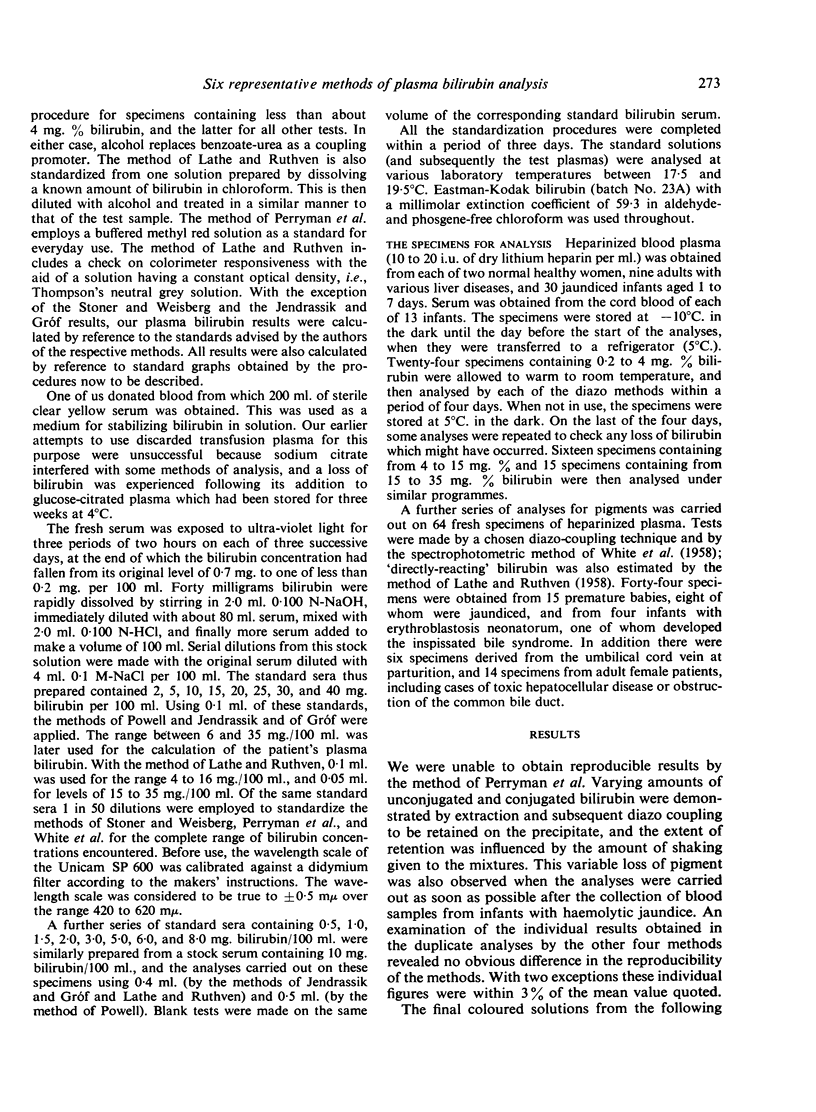

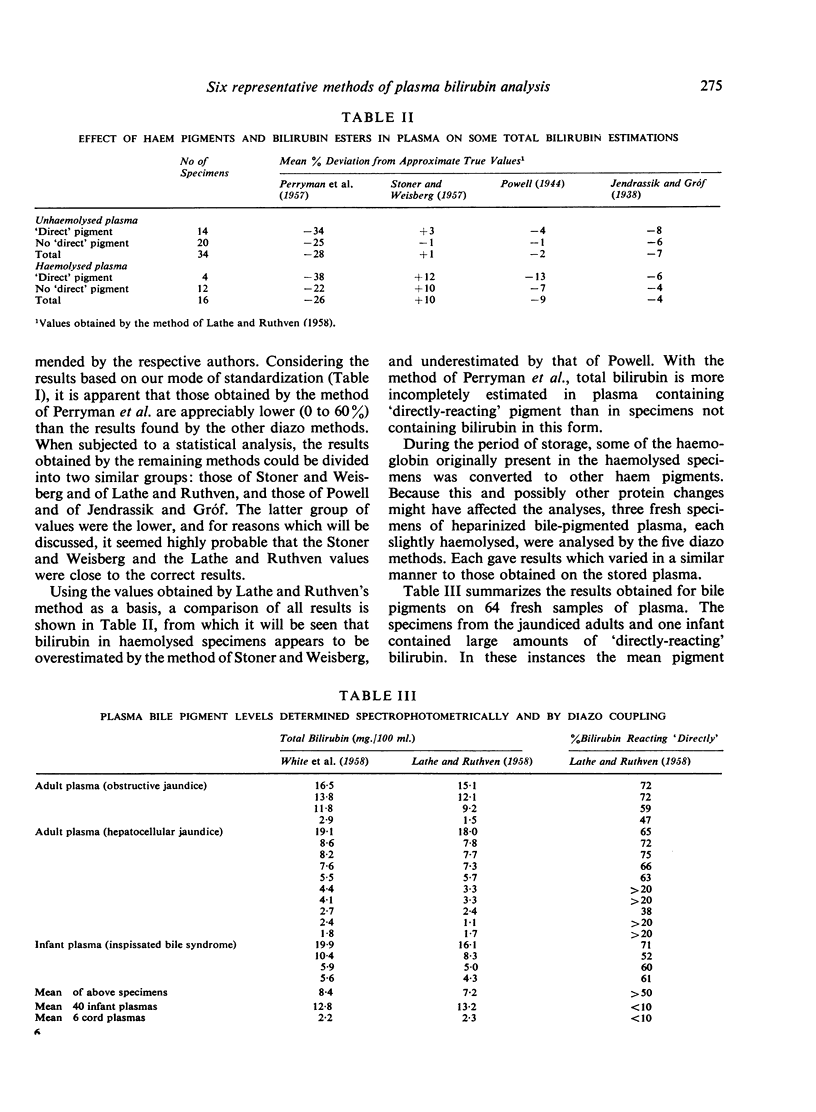
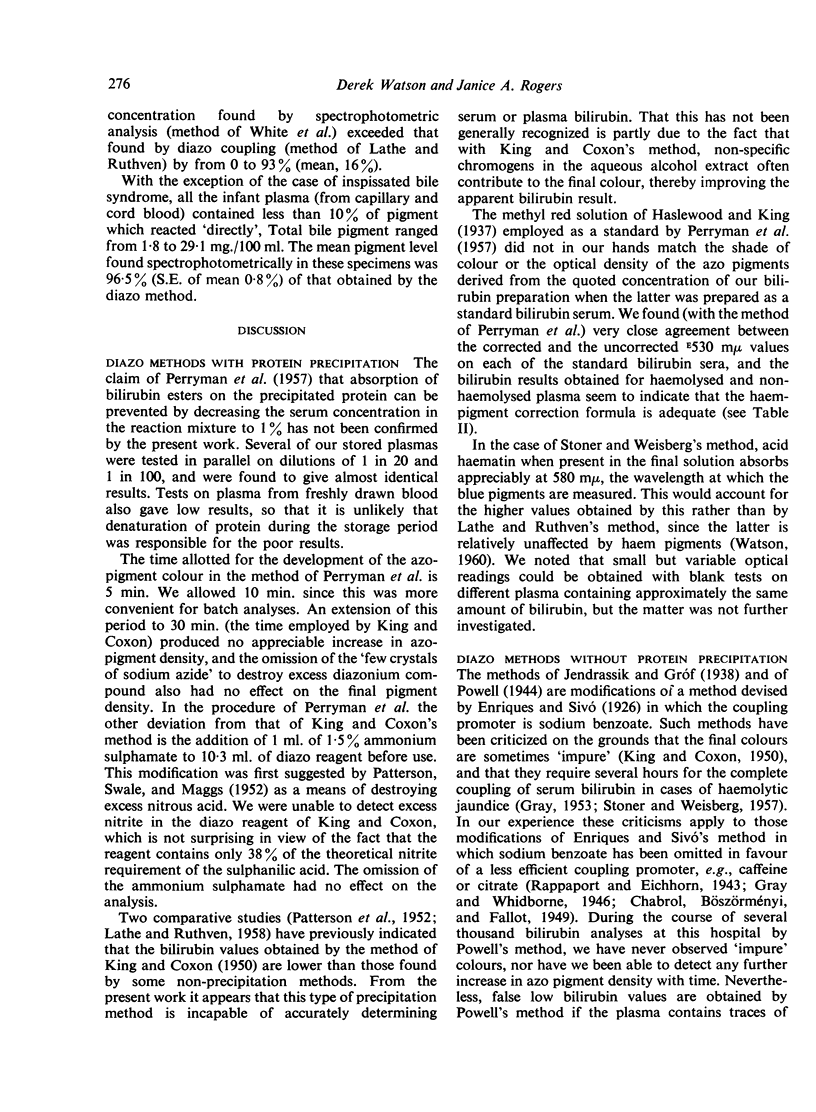
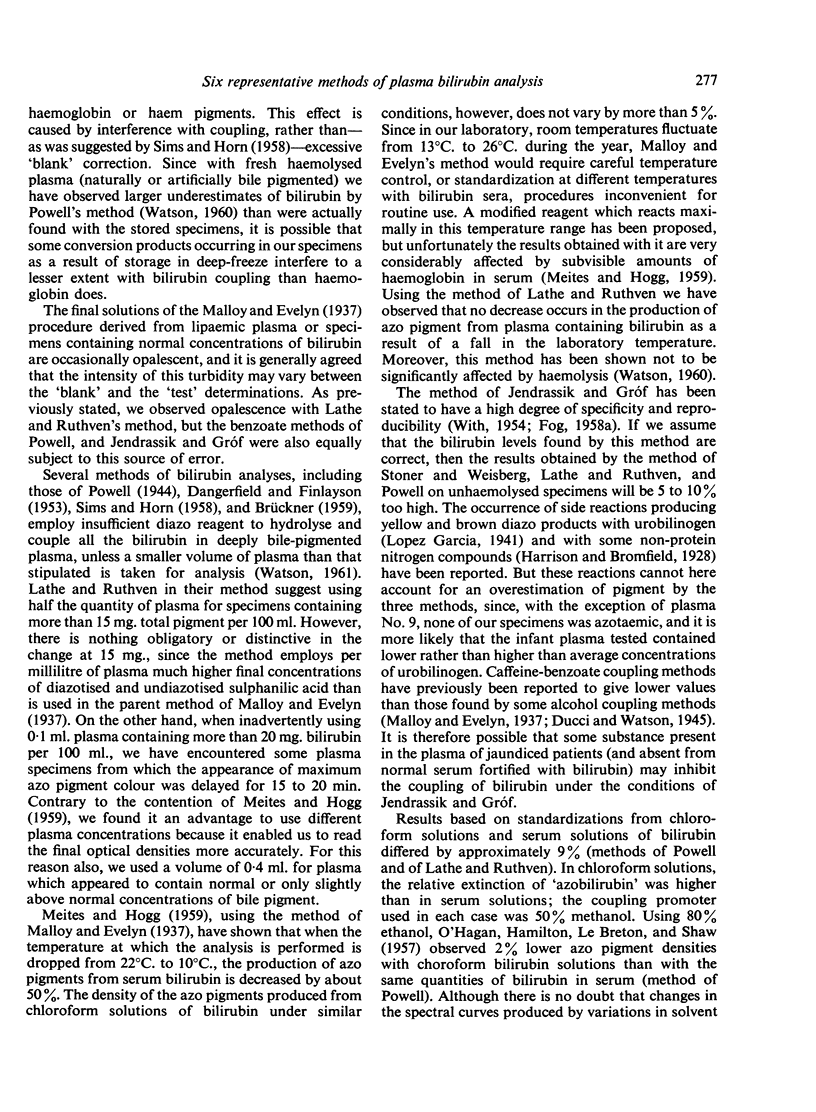
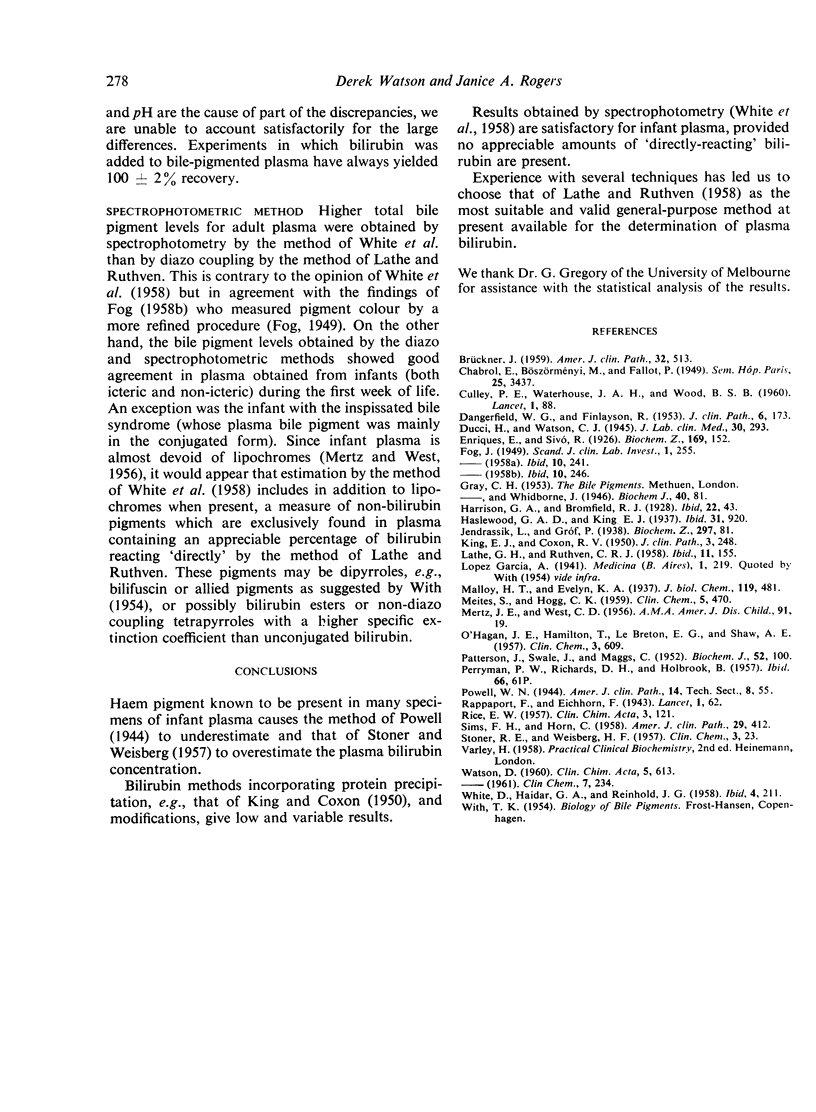
Selected References
These references are in PubMed. This may not be the complete list of references from this article.
- BRUCKNER J. A study on the estimation of low concentrations of serum bilirubin. Am J Clin Pathol. 1959 Dec;32:513–520. doi: 10.1093/ajcp/32.6.513. [DOI] [PubMed] [Google Scholar]
- CHABROL E., BOSZORMENYI M., FALLOT P. Les oxydo-réactions de la bilirubine. Sem Hop. 1949 Nov 10;25(83):3437–3445. [PubMed] [Google Scholar]
- CULLEY P. E., WATERHOUSE J. A., WOOD B. S. Clinical assessment of depth of jaundice in newborn infants. Lancet. 1960 Jan 9;1(7115):88–89. doi: 10.1016/s0140-6736(60)92903-2. [DOI] [PubMed] [Google Scholar]
- DANGERFIELD W. G., FINLAYSON R. Estimation of bilirubin in serum. J Clin Pathol. 1953 Aug;6(3):173–177. doi: 10.1136/jcp.6.3.173. [DOI] [PMC free article] [PubMed] [Google Scholar]
- FOG J. Determination of bilirubin in serum as alkaline azobilirubin. Scand J Clin Lab Invest. 1958;10(3):241–245. doi: 10.1080/00365515809087173. [DOI] [PubMed] [Google Scholar]
- Harrison G. A., Bromfield R. J. The cause of Andrewes's diazo-test for renal inefficiency. Biochem J. 1928;22(1):43–45. doi: 10.1042/bj0220043. [DOI] [PMC free article] [PubMed] [Google Scholar]
- Haslewood G. A., King E. J. The estimation of bilirubin in blood plasma. Biochem J. 1937 Jun;31(6):920–923. doi: 10.1042/bj0310920. [DOI] [PMC free article] [PubMed] [Google Scholar]
- King E. J., Coxon R. V. Determination of Bilirubin with Precipitation of the Plasma Proteins. J Clin Pathol. 1950 Aug;3(3):248–259. doi: 10.1136/jcp.3.3.248. [DOI] [PMC free article] [PubMed] [Google Scholar]
- LATHE G. H., RUTHVEN C. R. Factors affecting the rate of coupling of bilirubin and conjugated bilirubin in the van de Bergh reaction. J Clin Pathol. 1958 Mar;11(2):155–161. doi: 10.1136/jcp.11.2.155. [DOI] [PMC free article] [PubMed] [Google Scholar]
- MERTZ J. E., WEST C. D. A rapid micromethod for the determination of indirect bilirubin. AMA J Dis Child. 1956 Jan;91(1):19–22. doi: 10.1001/archpedi.1956.02060020021004. [DOI] [PubMed] [Google Scholar]
- O'HAGAN J. E., HAMILTON T., LE BRETON E. G., SHAW A. E. Human serum bilirubin; an immediate method of determination and its application to the establishment of normal values. Clin Chem. 1957 Oct;3(5):609–623. [PubMed] [Google Scholar]
- PATTERSON J., SWALE J., MAGGS C. The estimation of serum bilirubin. Biochem J. 1952 Sep;52(1):100–105. doi: 10.1042/bj0520100. [DOI] [PMC free article] [PubMed] [Google Scholar]
- RICE E. W. International survey of clinical chemistry procedures. Clin Chim Acta. 1958 Mar;3(2):121–130. doi: 10.1016/0009-8981(58)90069-x. [DOI] [PubMed] [Google Scholar]
- SIMS F. H., HORN C. Some observations on Powell's method for the determination of serum bilirubin. Am J Clin Pathol. 1958 May;29(5):412–417. doi: 10.1093/ajcp/29.5.412. [DOI] [PubMed] [Google Scholar]
- WATSON D. A note on the haemoglobin error in some nonprecipitation diazo-methods for bilirubin determinations. Clin Chim Acta. 1960 Jul;5:613–615. doi: 10.1016/0009-8981(60)90078-4. [DOI] [PubMed] [Google Scholar]
- WHITE D., HAIDAR G. A., REINHOLD J. G. Spectrophotometric measurement of bilirubin concentrations in the serum of the newborn by the use of a microcapillary method. Clin Chem. 1958 Jun;4(3):211–222. [PubMed] [Google Scholar]


